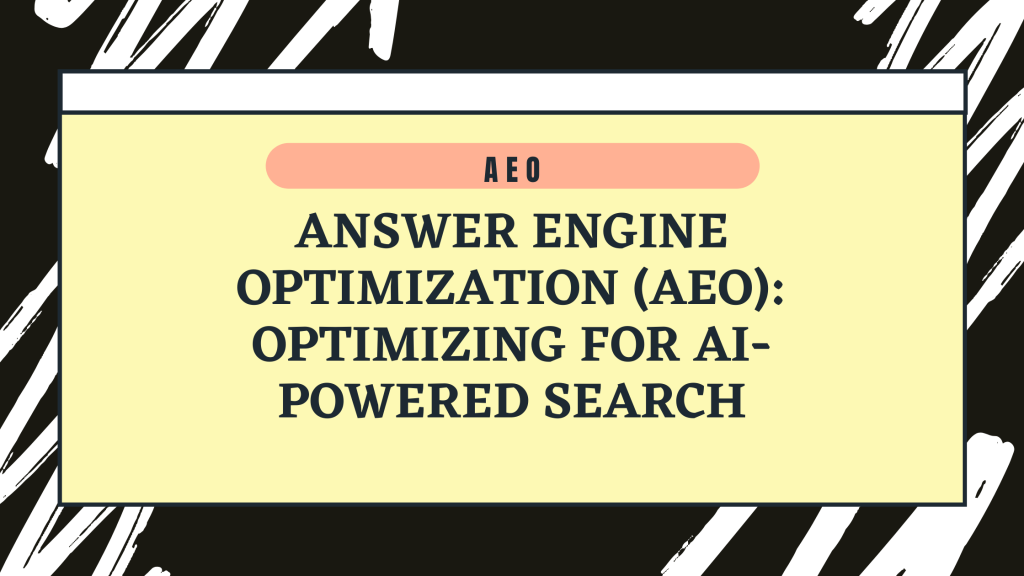Answer Engine Optimization (AEO): Optimizing for AI-Powered Search
April 20, 2025 0 comments
Answer Engine Optimization (AEO) centers on optimizing content to provide definitive answers to user queries, specifically targeting the algorithms powering AI-driven search. This differs from traditional SEO by prioritizing direct, machine-understandable responses over simple keyword matching.
The Importance of AEO
AI’s integration into search necessitates AEO. Search engines are transitioning from retrieval systems to answer engines, aiming to understand query intent and deliver direct, accurate responses. This shift is driven by:
- Voice Search: Users increasingly use natural language questions with voice assistants. AEO ensures content answers these conversational queries.
- Featured Snippets: These result positions provide direct query answers, increasing visibility.
- Knowledge Graphs: AI-powered search relies on knowledge graphs to understand entity relationships. AEO helps content integrate into these graphs.
AEO Strategies
Effective AEO implementation involves these strategies:
- User Intent Analysis:
- Focus on the question underlying keywords.
- Utilize long-tail keywords and natural language.
- Analyze “People Also Ask” sections to understand related queries.
- Content Creation:
- Provide clear, direct answers.
- Use structured formatting (lists, tables, headings).
- Prioritize value and problem-solving.
- Structured Data Implementation:
- Use Schema markup to provide context to search engines.
- Employ appropriate schema types (FAQPage, HowTo, Recipe).
- Example:
|
1 2 3 4 5 6 7 8 9 10 11 12 13 14 15 16 17 18 19 20 21 22 23 24 25 26 27 |
<script type="application/ld+json"> { "@context": "https://schema.org", "@type": "FAQPage", "mainEntity": [{ "@type": "Question", "name": "What is Answer Engine Optimization?", "acceptedAnswer": { "@type": "Answer", "text": "Answer Engine Optimization (AEO) optimizes content to provide definitive answers to user queries, specifically targeting the algorithms powering AI-driven search." } }] } </script> |
-
- This enables direct answer extraction.
- Natural Language Processing (NLP) Integration:
- Use natural language and conversational tones.
- Focus on semantic relationships.
- NLP algorithms interpret the relationships between words, and the meaning of those relationships.
- E-E-A-T Emphasis:
- Demonstrate Experience, Expertise, Authoritativeness, and Trustworthiness (E-E-A-T).
- Provide accurate, researched information.
- Build authority through backlinks and mentions.
- Establish trust through transparency.
- For example, medical content should demonstrate author experience and link to trusted medical sources.
The Direction of Search
AEO is essential for maintaining content relevance in AI-powered search. Search engines will continue to improve intent understanding and direct answer delivery. AEO implementation ensures content visibility in this evolving environment.
Related Posts
-
March 6, 2014
Matt Cutts explains Percolator, Dremel and Pregel
This is an unusual question even to Matt Cutts and not much related to SEO. But still interesting to learn what's happening behind the search giant. In this Video Matt discusses some (internal) propriety tools that are in Google's research labs and infrastructure that help to run them. The question
Google, Search Engine Optimization, Welcome0 comments -
September 25, 2023
AI vs SEO professionals: Why Robots Will Never Outwit Our Humor (Or Our SEO Strategies)
The rise of AI has undoubtedly changed the way we live, work, and interact with each other. From voice assistants to self-driving cars, the world of AI is rapidly advancing, and there's no denying that it's here to stay. But what about the role of SEO professionals in this ever-changing


